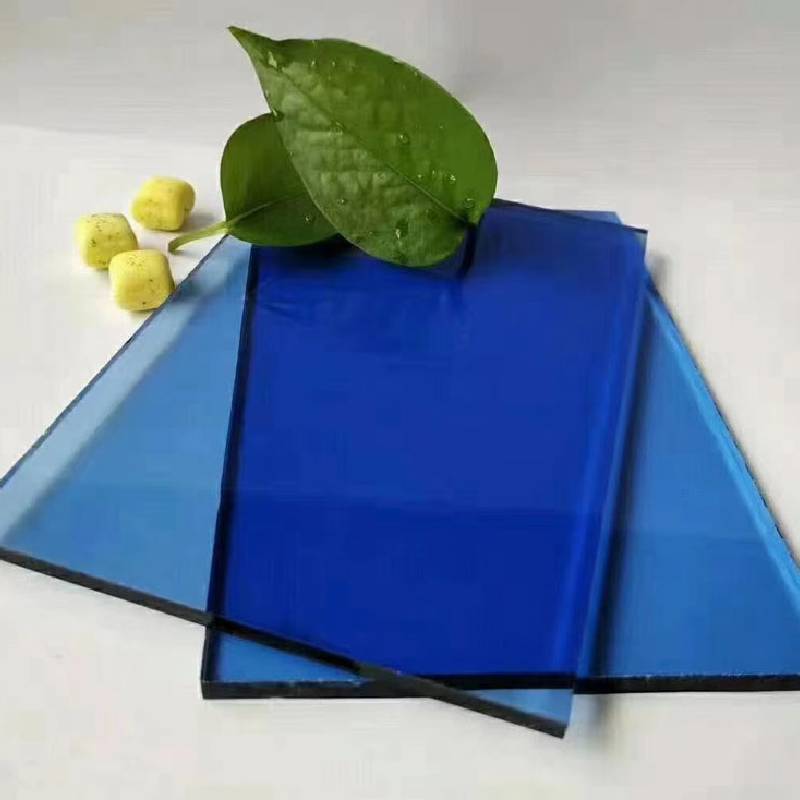The Use of Toughened Glass A Comprehensive Overview
Toughened glass, also known as tempered glass, is a type of safety glass processed by controlled thermal treatments to increase its strength and thermal resistance. The production process involves heating the glass to over 600°C and then rapidly cooling it, creating a compressive surface stress that enhances its resistance to impact and temperature changes. The growing popularity of toughened glass in various industries can be attributed to its numerous advantages, making it a preferred choice for applications ranging from architectural design to automotive manufacturing.
Architectural Applications
One of the most significant uses of toughened glass is in architecture. It is extensively employed in the construction of buildings, providing both aesthetic appeal and safety. The use of large glass panels has become fashionable in modern architectural design, allowing for natural light infiltration and creating a sense of openness. Toughened glass is particularly favored for facades, balustrades, and glass roofs due to its high safety standards. Unlike regular glass, which is prone to shattering upon impact, toughened glass breaks into small, blunt pieces, significantly reducing the risk of injury.
Moreover, toughened glass offers superior thermal insulation properties. It helps in regulating indoor temperatures, thereby contributing to energy efficiency. In climates with extreme weather conditions, toughened glass can withstand intense heat and cold, making it an ideal choice for both residential and commercial buildings. Its ability to resist thermal stress minimizes the risk of glass failure, ensuring longevity and durability in construction.
Automotive Industry
In the automotive industry, toughened glass is widely used in the production of windscreens, side windows, and rear windows. The strength and safety features of toughened glass make it an essential component in vehicle design. As vehicles are frequently subjected to pressure changes, temperature fluctuations, and potential impacts, having toughened glass ensures that passengers are protected in case of accidents. As with architectural applications, if toughened glass does break, it shatters into small pieces, reducing the likelihood of severe injuries.
Furthermore, the use of toughened glass in automobiles has become increasingly important due to regulatory standards regarding safety and emissions
. The lightweight nature of toughened glass also contributes to improving fuel efficiency in vehicles, as manufacturers aim to reduce overall weight while maintaining structural integrity.
use of toughened glass
Consumer Products
In addition to architectural and automotive applications, toughened glass is utilized in various consumer products. Reflective surfaces, such as tabletops and shower enclosures, are often made from toughened glass to combine functionality with style. The increased strength of toughened glass means that it can withstand scratches and heavy usage, providing longevity for everyday items.
Kitchenware, such as baking trays and cookware, also benefits from the properties of toughened glass. It can endure temperature changes without cracking, making it ideal for oven use. Plus, the ability to maintain hygiene standards with toughened glass adds an additional layer of appeal for consumers conscious about cleanliness and safety.
Sustainability Considerations
As the world shifts towards sustainability, toughened glass presents an environmentally friendly option. It is recyclable, which aligns with increasing efforts to reduce waste. Manufacturers are also exploring ways to produce toughened glass with reduced energy consumption during manufacturing. The continued innovation in the production process represents a significant step toward sustainability in the glass industry.
Conclusion
Toughened glass signifies a critical advancement in material science, offering strength, safety, and flexibility across various applications. From modern architecture to automotive design, and consumer products, its extensive use underscores the necessity for materials that combine aesthetic appeal with functionality and safety. With ongoing developments aimed at improving its production process and sustainability, the role of toughened glass is set to expand even further, revolutionizing multiple industries for years to come.
 Afrikaans
Afrikaans  Albanian
Albanian  Amharic
Amharic  Arabic
Arabic  Armenian
Armenian  Azerbaijani
Azerbaijani  Basque
Basque  Belarusian
Belarusian  Bengali
Bengali  Bosnian
Bosnian  Bulgarian
Bulgarian  Catalan
Catalan  Cebuano
Cebuano  Corsican
Corsican  Croatian
Croatian  Czech
Czech  Danish
Danish  Dutch
Dutch  English
English  Esperanto
Esperanto  Estonian
Estonian  Finnish
Finnish  French
French  Frisian
Frisian  Galician
Galician  Georgian
Georgian  German
German  Greek
Greek  Gujarati
Gujarati  Haitian Creole
Haitian Creole  hausa
hausa  hawaiian
hawaiian  Hebrew
Hebrew  Hindi
Hindi  Miao
Miao  Hungarian
Hungarian  Icelandic
Icelandic  igbo
igbo  Indonesian
Indonesian  irish
irish  Italian
Italian  Japanese
Japanese  Javanese
Javanese  Kannada
Kannada  kazakh
kazakh  Khmer
Khmer  Rwandese
Rwandese  Korean
Korean  Kurdish
Kurdish  Kyrgyz
Kyrgyz  Lao
Lao  Latin
Latin  Latvian
Latvian  Lithuanian
Lithuanian  Luxembourgish
Luxembourgish  Macedonian
Macedonian  Malgashi
Malgashi  Malay
Malay  Malayalam
Malayalam  Maltese
Maltese  Maori
Maori  Marathi
Marathi  Mongolian
Mongolian  Myanmar
Myanmar  Nepali
Nepali  Norwegian
Norwegian  Norwegian
Norwegian  Occitan
Occitan  Pashto
Pashto  Persian
Persian  Polish
Polish  Portuguese
Portuguese  Punjabi
Punjabi  Romanian
Romanian  Russian
Russian  Samoan
Samoan  Scottish Gaelic
Scottish Gaelic  Serbian
Serbian  Sesotho
Sesotho  Shona
Shona  Sindhi
Sindhi  Sinhala
Sinhala  Slovak
Slovak  Slovenian
Slovenian  Somali
Somali  Spanish
Spanish  Sundanese
Sundanese  Swahili
Swahili  Swedish
Swedish  Tagalog
Tagalog  Tajik
Tajik  Tamil
Tamil  Tatar
Tatar  Telugu
Telugu  Thai
Thai  Turkish
Turkish  Turkmen
Turkmen  Ukrainian
Ukrainian  Urdu
Urdu  Uighur
Uighur  Uzbek
Uzbek  Vietnamese
Vietnamese  Welsh
Welsh  Bantu
Bantu  Yiddish
Yiddish  Yoruba
Yoruba  Zulu
Zulu 

